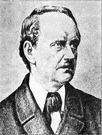Prasad, "Adsorption of Cu (II), Mn (II) and Zn (II) by Spirodela polyrhiza (L.)
Schleiden: equilibrium, kinetic and thermodynamic studies," Ecological Engineering, vol.
In the discussion of how new "discoveries in Biological Science" reveal a "continuity of the animal and vegetable series of organic forms" and thus blur the "sharp line of division between them" (138), Dallinger refers to the core findings of a branch of biology that just came up in the time Whitman wrote Leaves of Grass, then referred to as "cell theory": "Schwann and
Schleiden have shown that the fundamental basis of both animal and vegetable life is the same--a cell" (138).
9,763,835 Comfortable Diaper: Uwe Jurgen Becker, Euskirchen, Germany; Ludwig Busam, Huenstetten, Germany; Bruno Johannes Ehrnsperger, Bad Soden, Germany; Torsten Lindner, Kronberg, Germany; Siegfried Link,
Schleiden, Germany; Volker Maier, Euskirchen, Germany; Sanaul Kabir Siddiquee, Brussels, Belgium; Gabriele Stiehl, Schwalbach, Germany; and Thomas Tombuelt, Nettersheim, Germany.
Ph ES-IT Spirodela polyrrhiza (L.)
Schleiden Hy ES-IT Stachys benthamiana Boiss He IT Stachys kermanshahensis Rech.
The science of plant tissue culture takes its roots from proposal of,
Schleiden and Schwann (1838), that cell is the basic unit of all living organisms.
Even at its earliest stage of development, the microscope was instrumental in the conception of the cell theory of Matthias
Schleiden and Theodor Schwann in 1838; it also provided Robert Hooke (1635-1703) with the first observations of individual cells of cork.
A history of plant biotechnology: from the cell theory of
Schleiden and Schwann to biotech crops.
Due to the resemblance with living plants such as the freshwater Spirodela
Schleiden, Kvacek (1995) and Stockey et al.
 Schleiden - German physiologist and histologist who in 1838 formulated the cell theory (1804-1881)
Schleiden - German physiologist and histologist who in 1838 formulated the cell theory (1804-1881)